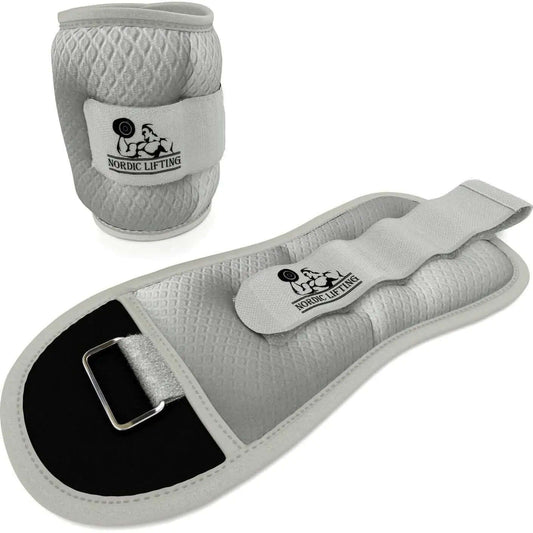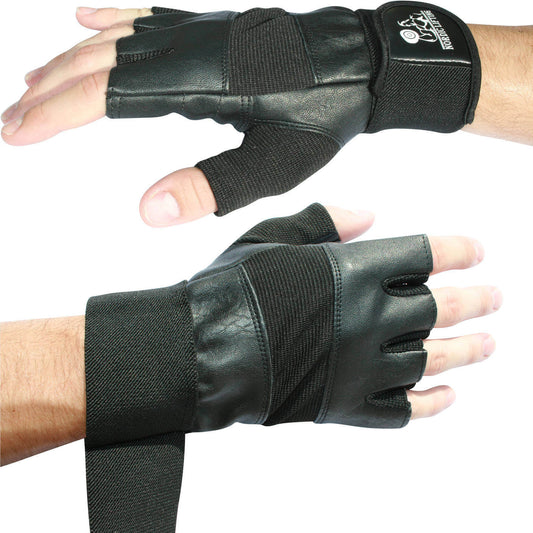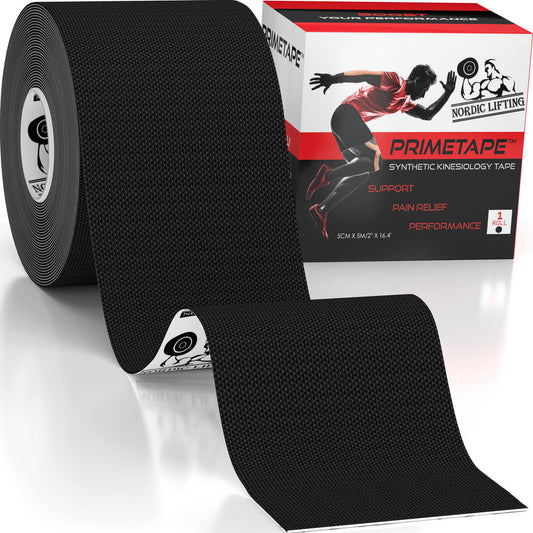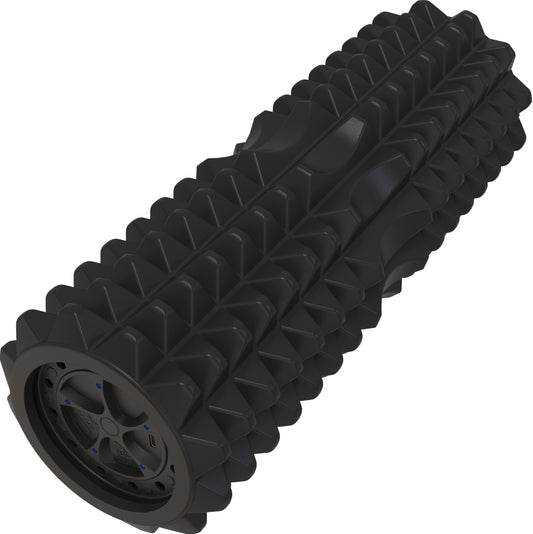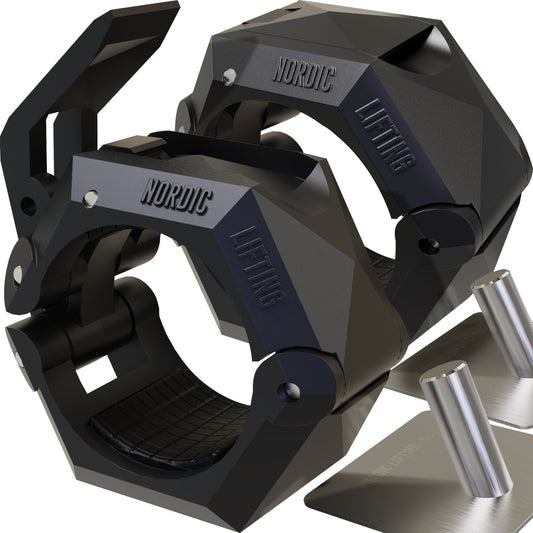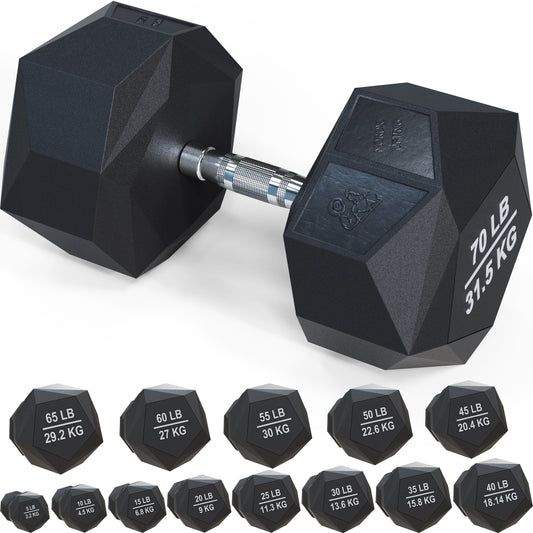Powerlifting is a sport where the goal of each lifter is to successfully lift the maximum weights for three exercises: squats, bench presses, and deadlifts. That’s powerlifting in a nutshell, but there is more complexity to how this sport works and why it is the ultimate sport in fitness. In this article, you will learn more about powerlifting from a beginner’s perspective.
Want to know more about powerlifting, aside from the fact that it is considered the strongest sport in the world?
Powerlifting Sport Overview
Powerlifting is a sport in which the goal is to lift the heaviest weight possible in a certain weight and age category in the squat, bench press, and deadlift. Here’s the basic breakdown of powerlifting:
Three Main Powerlifting Lifts
Each of these lifts is designed to put different muscle groups and movement patterns to the test, and all three are necessary for success in order to win. These lifts are performed in order.
1. Squat:
- Lift: The barbell is placed on the lifter's upper back.
- Movement: Bend at the hips and knees to lower the body until the thighs are parallel or below.
- Execution: Stand back up to the starting position.
- Rules: Hip crease below the knee at the bottom, and full extension at the top.
How do you perform squat lifting in a proper way?
Maintaining a minimum depth, maintaining balance, demonstrating control at the beginning and completion of the exercise, and moving the barbell forward without dipping or bouncing are all important components of a proper squat. Maintaining a neutral back is also advised.
2. Bench Press:
- Setup: Lying on a flat bench with feet flat on the floor.
- Movement: Lower the barbell to the chest and press it back up.
- Execution: Arms fully extended at the top.
- Rules: The bar must touch the chest, and the arms must straighten at the top. Wait for commands.
How do you perform bench presses in a proper way?
It is recommended to start a deadlift with your midfoot under the barbell, stoop to grab the bar with a shoulder-width grip, bend your knees until your shins touch it, raise your chest and extend your lower back, take a deep breath, hold it, and then stand up with the weight, locking your hips and knees at the top.
Bend your legs and move your hips back to bring the weight back to the floor. After a little rest at the bottom, resume. To prevent damage, your lower back must remain neutral. Your spine is at risk when you round it during powerful deadlifts. It can harm your spinal discs since it applies uneven pressure to them.
3. Deadlift:
- Setup: Feet hip-width apart, grip barbell with hands outside knees.
- Movement: Lift the bar from the ground to a standing position.
- Execution: Hips and knees fully extended, shoulders back.
- Rules: Must be no ramping or bouncing; it must be fully locked out at the top.

How do you perform deadlifts in a proper way?
You should maintain your feet flat on the floor, your butt on the bench, and your shoulder blades retracted when doing a bench press. Maintaining a neutral back is also advised.
Lifting the most weight possible in a single repetition is the aim of all three exercises. But weight isn't the only factor that matters. Each contestant has to stick to particular rules and lift forms while competing. So a powerlifting program needs to focus on optimal lifting methods for the squat, deadlift, and bench press in addition to maximum strength training.
Essential Powerlifting Gear for Beginners
There are a few essential pieces of gear that you should have as a powerlifting beginner if you want to boost your experience, safety, and performance. The following is a list of basic powerlifting gears:
- Weightlifting shoes. Stable shoes with a flat sole provide a solid base for lifting.
- Weighlifting belt. It will support your lower back during heavy lifts for better spinal alignment and stability.
- Wrist wraps. During heavy lifting, such as bench press lifts and overhead lifts, wrist wraps will support you.
- Knee Sleeves. This will provide compression on your knees to help you prevent injuries and improve your squat.
- Lifting Staps. Straps are the best lifting gear that will assist you in having a stronger grip when pulling deadlifts.

Keep in mind that while this kind of gear may be helpful, it's important to place a focus on proper form and technique during your training. Depending on your specific needs and preferences, you may consider additional equipment as you advance in your powerlifting journey.
Importance Of What You Eat In Powerlifting
Did you know that you need a completely different diet than the average person if you powerlift?
It is hard to overstate the importance of diet in powerlifting. Your performance, recovery, and overall performance in sports are greatly impacted by the foods you eat. Powerlifting requires a proper diet for the following main reasons:
- Energy for workouts. Powerlifting calls for both stamina and strength. Appropriate energy from diet powers your exercises, allowing you to lift weights and keep up the intensity during training sessions.
- Muscle recovery. Session after session of heavy lifting damages muscles. A proper diet, especially one high in protein, promotes muscle growth and repair, helping you to heal from workouts efficiently.
- Optimal body composition. For powerlifters, achieving and sustaining an ideal body composition is essential. Keeping a proper balance of proteins, lipids, and carbohydrates helps to control body fat levels and maintain muscle mass.
- Strength and power output. During high-intensity activities, carbohydrates are the main source of energy. Consuming sufficient carbohydrates guarantees that glycogen stores are refilled, which supports the production of strength and power during lifts.
- Hydration is needed for performance. Performance can be greatly impacted by dehydration. Sustaining strength, attention, and general exercise performance requires enough water.
Key Takeaway
There is more to powerlifting than meets the eye. It is a sport that involves lifting heavy weights during squats, bench presses, and deadlifts. For people who are new to weightlifting, this blog offers practical information on everything from how to perform each lift correctly to what equipment is necessary for beginners.
In demonstrating the effects of a customized diet on energy levels, muscle recovery, body composition, and overall strength and power production during strenuous exercises, it highlights the importance of nutrition in powerlifting. In addition to emphasizing heavy lifting, aspiring powerlifters are encouraged to stress good form, technique, and a diet that is in line with their performance objectives.
FAQs
- Do I need to be a certain age or fitness level to start powerlifting?
No, powerlifting is inclusive and suitable for various ages and fitness levels. Beginners are welcome, and progress is achievable with proper training.
- Is powerlifting only for competitive athletes?
No, while there are competitive powerlifters, many people engage in powerlifting for personal fitness goals without competing.
- Can powerlifting help with weight loss or muscle gain?
Yes, powerlifting can contribute to weight loss through calorie expenditure and muscle gain by stimulating muscle growth through resistance training.
- How is powerlifting scored?
Lifters accumulate a total by combining their heaviest successful lift in each of the three exercises. The person with the highest total in their weight class wins.
- How often should I train for powerlifting?
Training frequency varies, but beginners often benefit from 3-4 sessions per week. Rest and recovery are crucial, so listen to your body and allow adequate time for recovery between sessions.







